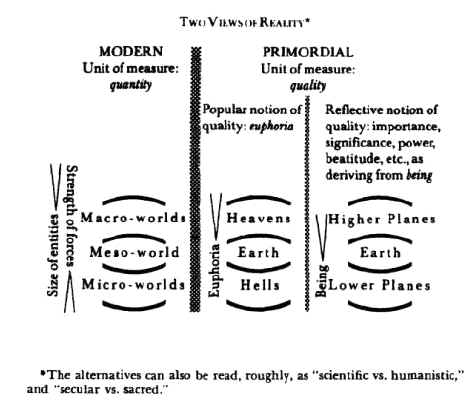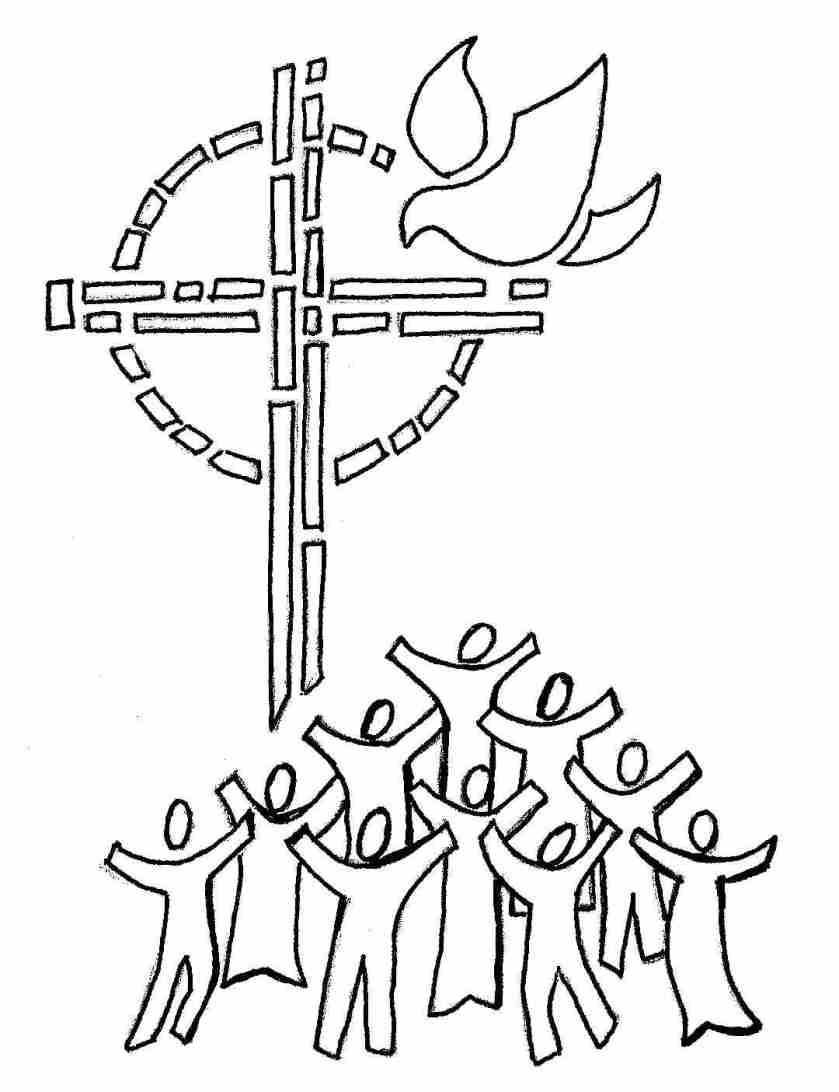THE ARGUMENT The past lives only in the present in that our consciousness is marked and shaped by those whose insights we come to re-realize – including those that come from the great spiritual teachers. Memories are like art and sacred writings that are simply marks made – but marks made that can transport us to our own high realization in inspired consciousness. Bill Viola is now re-presenting us through his mastery of one of newest of mediums, video, with access to that spiritual core at the heart of the great world wisdom traditions. Is this a perfect post-modernist match of spirit and form?
In my SunWALK model about ‘what it is to be human‘ and about ‘how can we spiritualize education without the exclusivity of sectarian religion‘ I was inspired by several quotations as well as by Seamus Heaney’s poem Personal Helicon.
 Bill Viola from ‘Ocean Without a Shore‘ – click to see full size – Source artdaily
Bill Viola from ‘Ocean Without a Shore‘ – click to see full size – Source artdaily
“One of the things the camera taught me was to see the world, the same world that my eye sees, in its metaphoric, symbolic state. This condition is, in fact, always present, latent in the world around us .”
– Bill Viola
I was interested to see news about Bill Viola’s recent work ‘Ocean Without a Shore’ (shown at Chiesa di San Gallo, Venice). Viola’s website cites the following two inspirations;
“The Self is an ocean without a shore. Gazing upon it has no
beginning or end, in this world and the next.”
Ibn al’Arabi (1165 – 1240)
From the Viola site we learn;
‘Ocean Without a Shore’ is about the presence of the dead in our lives. The three stone altars in the church of San Gallo become portals for the passage of the dead to and from our world. Presented as a series of encounters at the intersection between life and death, the video sequence documents a succession of individuals slowly approaching out of darkness and moving into the light. Each person must then breakthrough an invisible threshold of water and light in order to pass into the physical world. Once incarnate however, all beings realize that their presence is finite and so they must eventually turn away from material existence to return from where they came. The cycle repeats without end.
The work was inspired by a poem by the 20th century Senegalese poet and storyteller Birago Diop:
“ Hearing things more than beings,
listening to the voice of fire,
the voice of water.
Hearing in wind the weeping bushes,
sighs of our forefathers.
The dead are never gone:
they are in the shadows.
The dead are not in earth:
they’re in the rustling tree,
the groaning wood,
water that runs,
water that sleeps;
they’re in the hut, in the crowd,
the dead are not dead.
The dead are never gone,
they’re in the breast of a woman,
they’re in the crying of a child,
in the flaming torch.
The dead are not in the earth:
they’re in the dying fire,
the weeping grasses,
whimpering rocks,
they’re in the forest, they’re in the house,
the dead are not dead.”
(from David Melzter, ed. Death – An Anthology of Ancient Texts, Songs, Prayers and Stories (San Francisco: North Point Press, 1984)
The Ibn al’Arabi quotations reminded me of my attempt to portray our state in visiting ‘the shoreline’ and encountering the unknowable Whole – in my Personal Myth and the four key qutations (SEE below)
The poetic sense of the dead speaking in the ‘dying fire, the weeping grasses’ etc is secondary for me to how they live on in the consciousness that we possess, because of them. Our spirits continue to live out their consciousness through ours.
FOUR KEY QUOTATIONS
The Ibn al’Arabi quotation also reminded me of the inspiration I got from four key quotations in relation to a sense of the Whole and to a panentheistic and Universalist perspective I hoped that they contributed to the leitmotif that made of the thesis parts, a whole;
Text 1)
“The larger the island of knowledge, the longer
the shoreline of mystery.” Unknown author
Text 2)
The search for reason ends at the shore of the known;
on the immense expanse beyond it
only the sense of the ineffable can glide.
It alone knows the route to that
which is remote from experience and understanding.
Neither is amphibious:
reason cannot go beyond the shore,
and the sense of the ineffable
is out of place where we measure, where we weigh…….
Citizens of two realms, we must all sustain dual allegiance:
we sense the ineffable in one realm;
we name and exploit reality in another.
Between the two we set up a system of references,
but can never fill the gap.
They are as far and as close to each other
As time and calendar, as violin and melody,
as life and what lies beyond the last breath.
The tangible phenomena we scrutinize with our reason,
The sacred and indemonstrable we overhear
with the sense of the ineffable.
Heschel A. J. (1971), Man is Not Alone, New York: Octagon Books p.8
Text 3)
Tao, the subtle reality of the universe
cannot be described.
That which can be described in words
is merely a conception of the mind.
Although names and descriptions have been applied to it,
the subtle reality is beyond the description.
One may use the word ‘Nothingness”
to describe the Origin of the universe,
and “Beingness”
to describe the Mother of the myriad things,
but Nothingness and Beingness are merely conceptions.
From the perspective of Nothingness,
one may perceive the expansion of the universe.
From the perspective of Beingness,
one may distinguish individual things.
Both are for the conceptual convenience of the mind.
Although different concepts can be applied,
Nothingness and Beingness
and other conceptual activity of the mind
all come from, the same indescribable subtle Originalness
The Way is the unfoldment of such subtle reality.
Having reached the subtlety of the universe,
one may see the ultimate subtlety,
the Gate of All Wonders.
Ni, Hua-Ching (1997), The Complete Works of Lao Tzu, Santa Monica, USA: Seven Star Communications – Tao The Ching (‘Chapter’ 1)
Text 4)
….set then yourselves towards His holy Court, on the shore of His mighty Ocean, so that the pearls of knowledge and wisdom, which God hath stored up within the shell of His radiant heart, may be revealed unto you….
(Baha’u’llah: Proclamation of Baha’u’llah, Pages: 8-9)
The past lives only in the present in that our consciousness is marked and shaped by those whose insights we come to re-realize – including those that come from the great spiritual teachers. Memories are like art and sacred writings that are simply marks made – but marks made that can transport us to our own high realization in inspired consciousness. Bill Viola is now re-presenting us through his mastery of one of newest of mediums, video, with access to that spiritual core at the heart of the great world wisdom traditions. Is this a perfect post-modernist match of spirit and form?
The mystic inner core of the great world wisdom traditions is incorrectly named as Perennial Philosophy
• There’s a reality beyond the material world:
• Which is uncreated.
• It pervades everything,
• but remains beyond the reach of human knowledge and understanding.
• You approach that reality by:
• Distinguishing ego from true self
• Understanding the nature of desire
• Becoming unattached
• Forgetting about preferences
• Not working for personal gain
• Letting go of thoughts
• Redirecting your attention
• Being devoted
• Being humble
• Invoking that reality
• Surrendering
• That reality approaches you through:
• Grace
• The teacher
• You’re transformed so that you embody that reality by:
• Dying and being reborn
Two views of the structure of Perennial Philosophy are HERE
Viola in our sea of uncertainty, and maelstrom of violence, is helping us re-connect.
Perhaps also Viola is showing us that video can do more fully what photographers – Minor White for example – have longed to do – to ‘en-form’ the spiritual?
—–0—–
All postings to this site relate to the central model in the PhD.
Summaries are HERE



 Source
Source